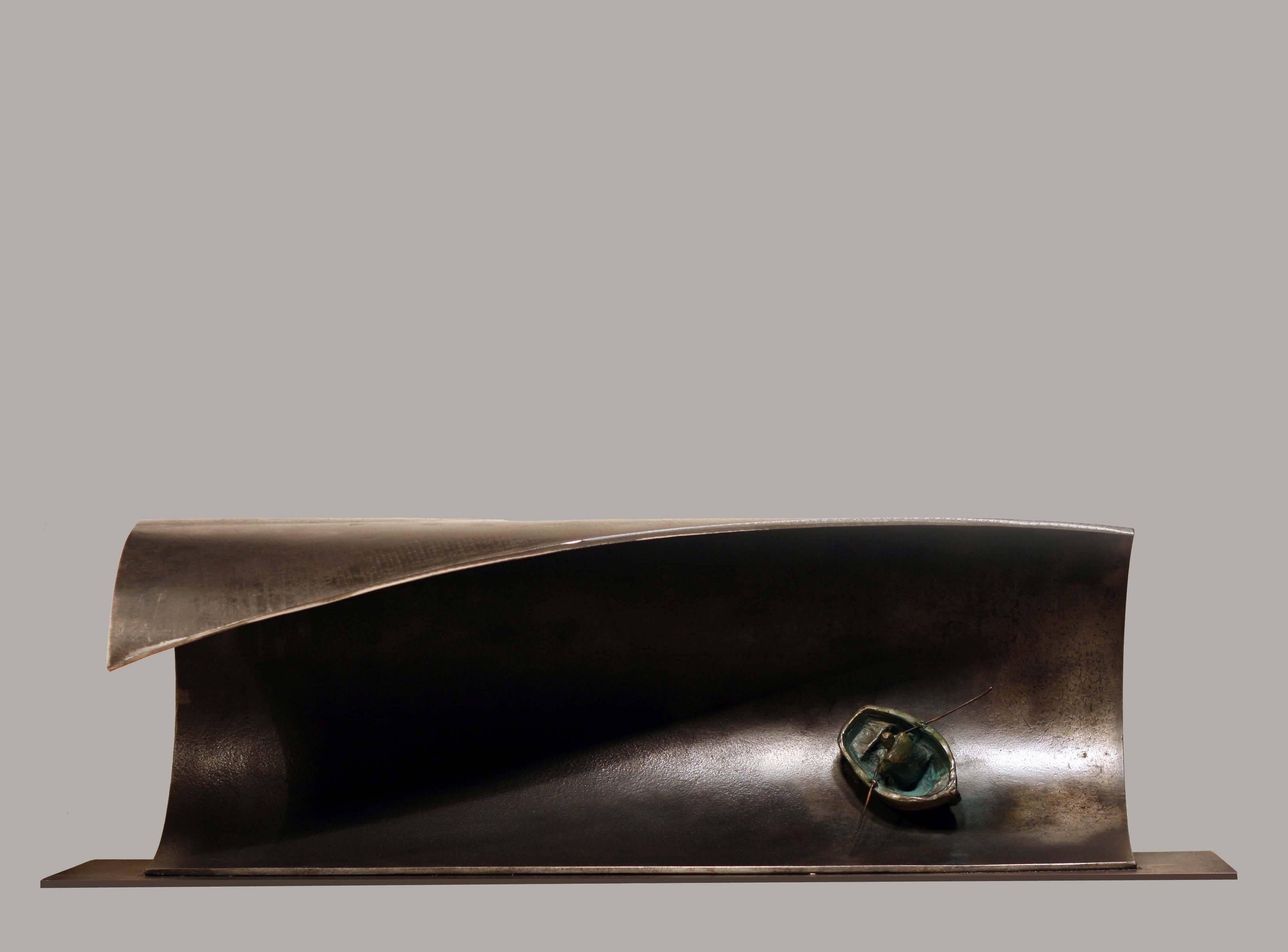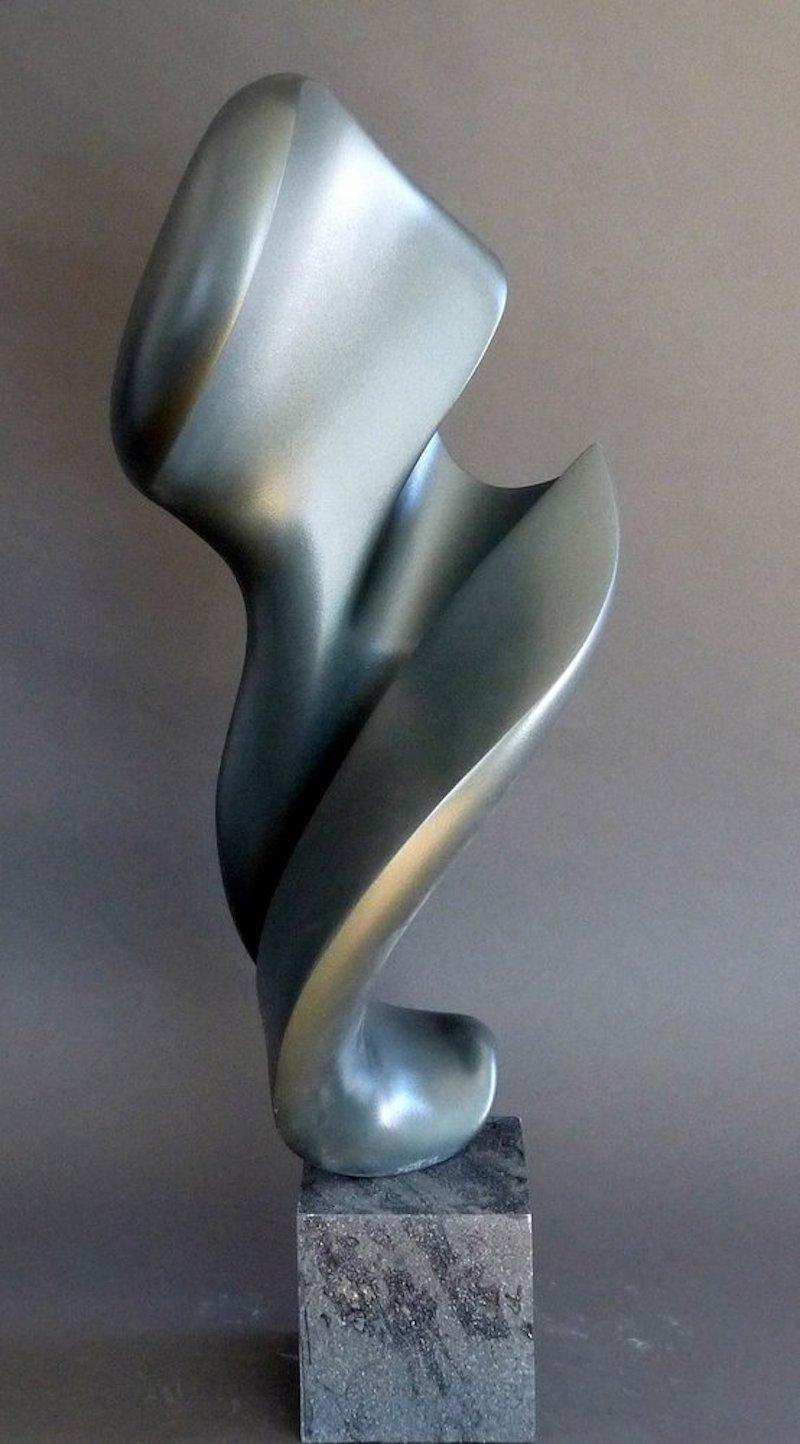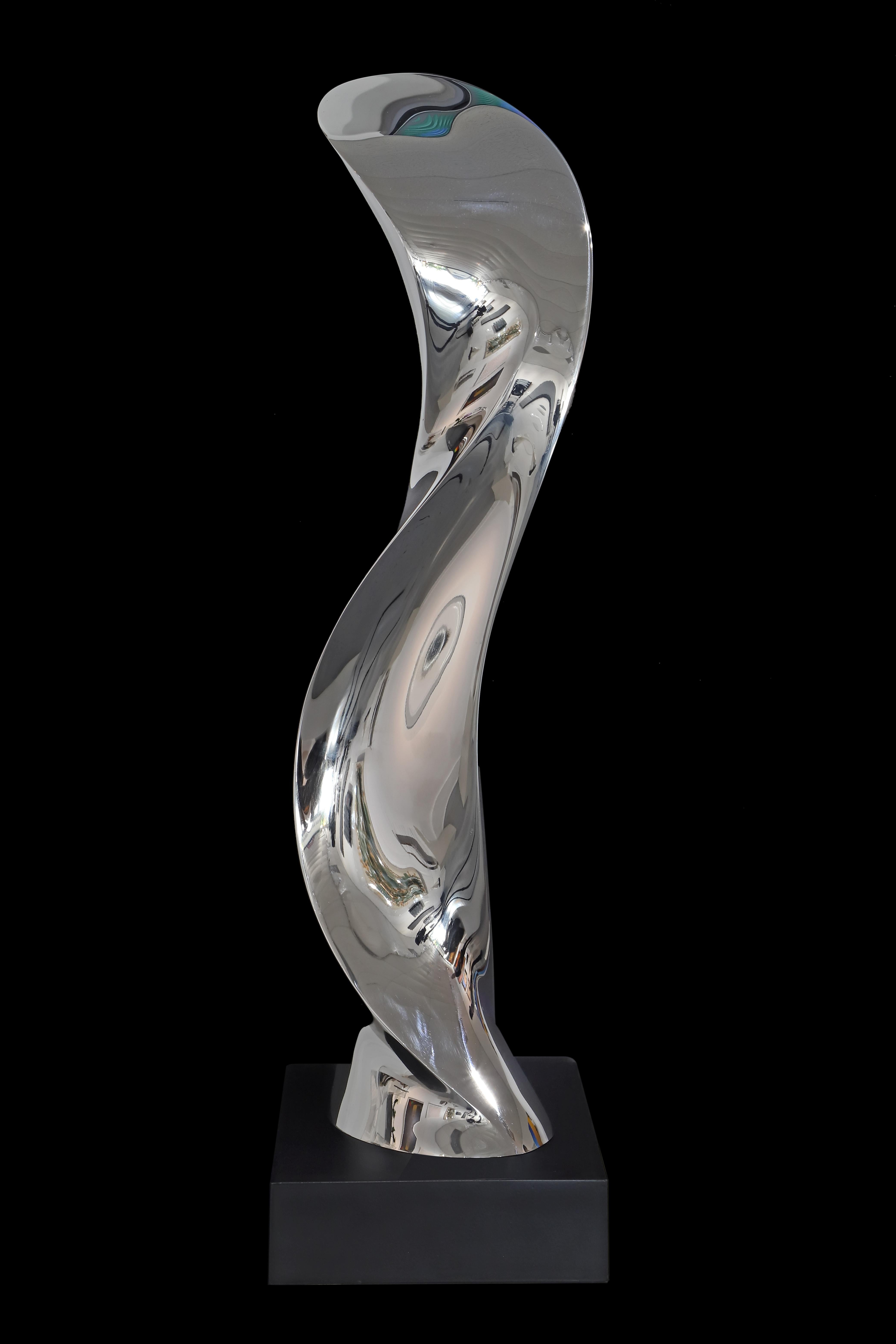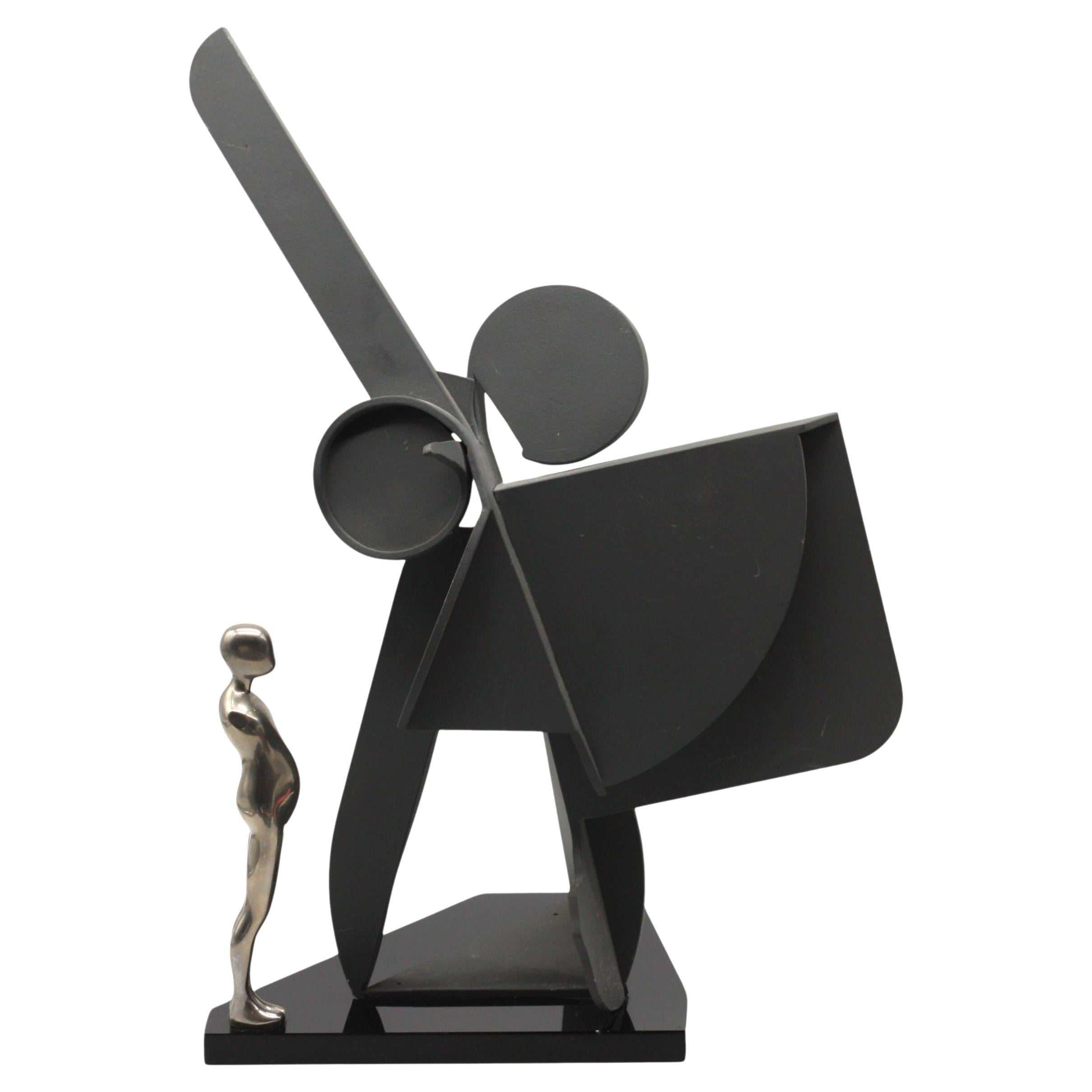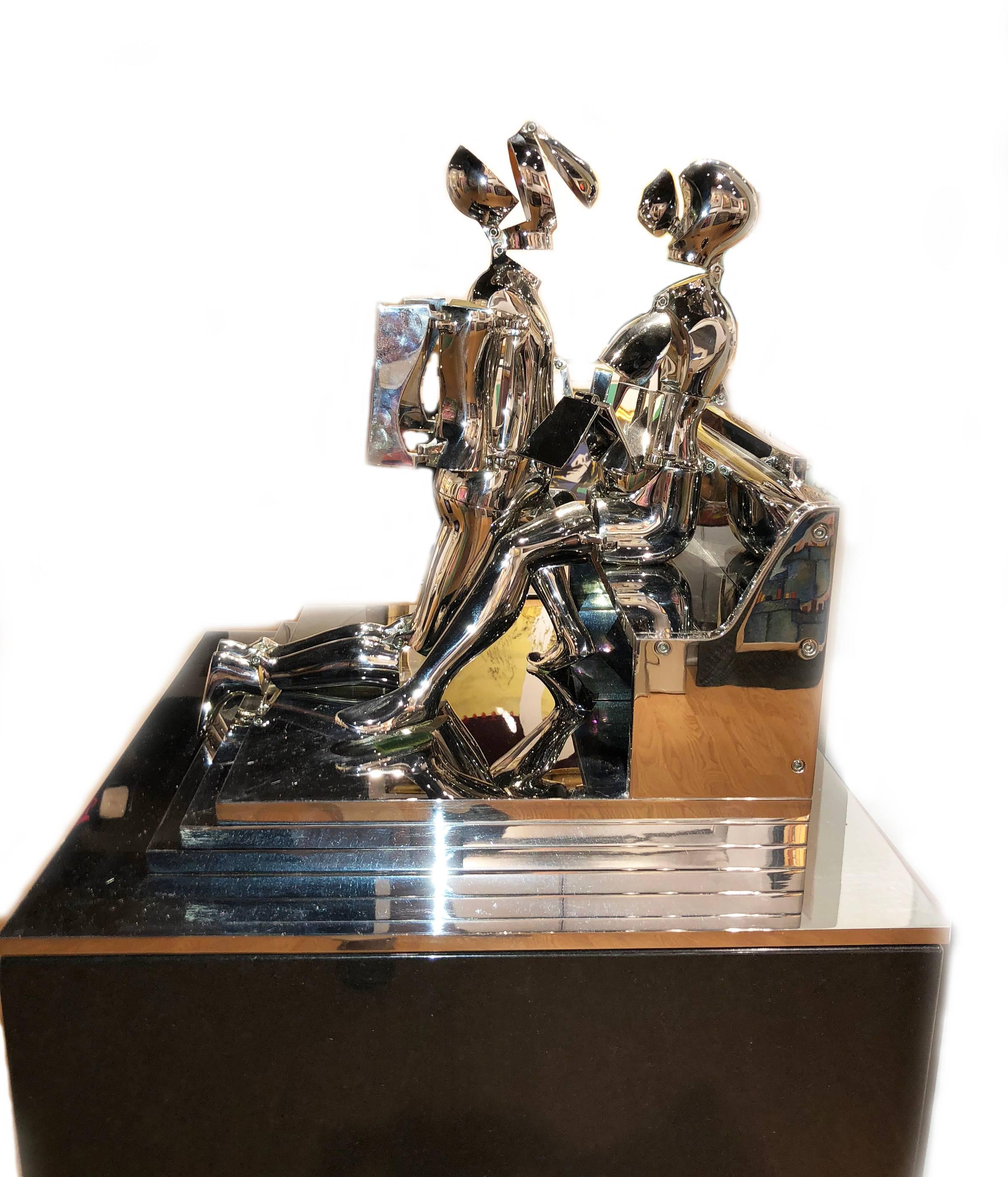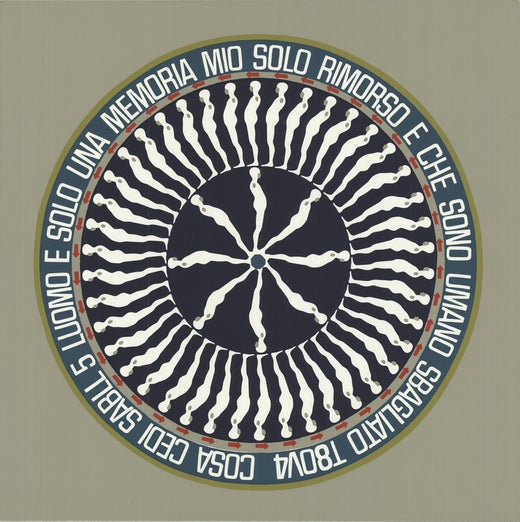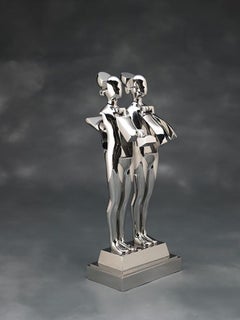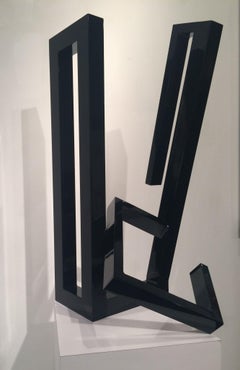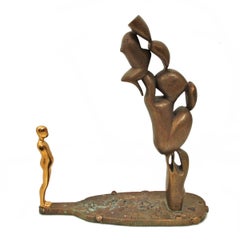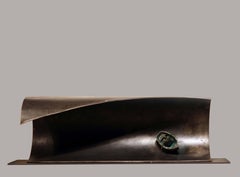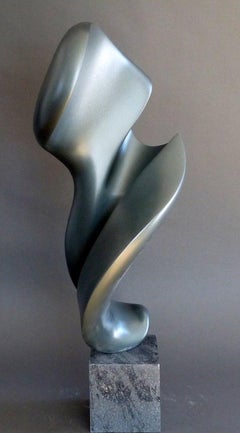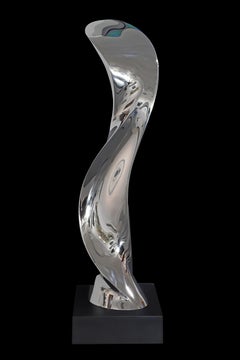Want more images or videos?
Request additional images or videos from the seller
1 of 2
Ernest TrovaFlowing Man1972
1972
$12,000
£9,074.87
€10,394.75
CA$16,814.88
A$18,356.19
CHF 9,664.77
MX$219,885.88
NOK 123,608.79
SEK 112,856.88
DKK 77,651.17
About the Item
Edition 37/99
- Creator:Ernest Trova (1927 - 2009, American)
- Creation Year:1972
- Dimensions:Height: 6.75 in (17.15 cm)Width: 19.5 in (49.53 cm)Depth: 3.5 in (8.89 cm)
- Medium:
- Movement & Style:
- Period:
- Condition:
- Gallery Location:Boca Raton, FL
- Reference Number:1stDibs: LU135426106942
Ernest Trova
In the early 1960s, St. Louis Sculptor Ernest Trova—who was entirely self-taught—began developing his pivotal theme of Falling Man, a stark and startling image that combines references to classical sculpture with an industrial aesthetic. In his Profile Canto series, Falling Man—depicted as an androgynous, mechanical figure—is folded and segmented as to be nearly undetectable amid the various geometric forms that comprise these works.
About the Seller
5.0
Recognized Seller
These prestigious sellers are industry leaders and represent the highest echelon for item quality and design.
Established in 1989
1stDibs seller since 2020
26 sales on 1stDibs
Typical response time: 5 hours
- ShippingRetrieving quote...Shipping from: Boca Raton, FL
- Return Policy
More From This Seller
View AllDouble Flapman
By Ernest Trova
Located in Boca Raton, FL
AP 2
Ernest Trova was an artist whose signature creation, a gleaming humanoid known as “Falling Man,” appeared in a series of sculptures and paintings and became a symbol of an imperfect humanity hurtling into the future. Mr. Trova was largely known as a sculptor, but his “Falling Man,” a standard of Pop Art, began life as a painted figure, taking shape on his easel in the early 1960s. Faceless, armless, with a hint of a belly and, its name notwithstanding, of indeterminate sex, the figure struck a variety of poses, sometimes juxtaposed with other like figures, sometimes with mechanical appendages.
In October 1963 his one-man show, “Falling Man Paintings,” was the inaugural exhibition of the Pace Gallery on West 57th Street in Manhattan; it sold out, with the works purchased by the Museum of Modern Art, the Whitney Museum, the architect Philip Johnson and others. In three dimensions, the “Falling Man” figure was made from different materials over the years — nickel and chrome-plated bronze, enamel on aluminum, stainless steel — and often, like the Oscar statuette, was polished to an industrial sheen. It was clearly a space age creation, a forerunner of C3PO, the golden robot in “Star Wars.”
“He found the space age both inspiring and dehumanizing,” Arne Glimcher, who founded the Pace Gallery, now PaceWildenstein, said in an interview on Friday. By the end of the 1960s, “Falling Man” had become Mr. Trova’s trademark, provoking Hilton Kramer, the art critic of The New York Times, to write that Mr. Trova had subjected his favorite figure “to almost as many variations as the Kama Sutra describes for the act of love.”
Ernest Tino Trova Jr. was born in St. Louis on Feb. 19, 1927. Shortly after his high school graduation his father, an industrial tool designer and inventor, died, and young Ernie, as he was known, went to work, most significantly as a window dresser for a department store. His early paintings were in the Abstract Expressionist mode, but his attentiveness to the mannequins had an influence on his art. Through the 1970s and 1980s he continued with “Falling Man,” though he also became interested in formalized, almost mechanical-seeming landscapes, and the figures began to appear, reduced in size, within the context of abstractly rendered gardens.
A self-taught artist with an impish wit and an eccentric turn of mind, Mr. Trova craved the recognition that was available to artists only in New York City, but he never visited for more than a week at a time and made almost no friends among New York artists. He did befriend Ezra Pound. As a fevered fan of Julio Iglesias...
Category
20th Century Contemporary Figurative Sculptures
Materials
Stainless Steel
Double Walking Figure
By Ernest Trova
Located in Boca Raton, FL
rnest Trova was an artist whose signature creation, a gleaming humanoid known as “Falling Man,” appeared in a series of sculptures and paintings and became a symbol of an imperfect humanity hurtling into the future. Mr. Trova was largely known as a sculptor, but his “Falling Man,” a standard of Pop Art, began life as a painted figure, taking shape on his easel in the early 1960s. Faceless, armless, with a hint of a belly and, its name notwithstanding, of indeterminate sex, the figure struck a variety of poses, sometimes juxtaposed with other like figures, sometimes with mechanical appendages.
In October 1963 his one-man show, “Falling Man Paintings,” was the inaugural exhibition of the Pace Gallery on West 57th Street in Manhattan; it sold out, with the works purchased by the Museum of Modern Art, the Whitney Museum, the architect Philip Johnson and others. In three dimensions, the “Falling Man” figure was made from different materials over the years — nickel and chrome-plated bronze, enamel on aluminum, stainless steel — and often, like the Oscar statuette, was polished to an industrial sheen. It was clearly a space age creation, a forerunner of C3PO, the golden robot in “Star Wars.”
“He found the space age both inspiring and dehumanizing,” Arne Glimcher, who founded the Pace Gallery, now PaceWildenstein, said in an interview on Friday. By the end of the 1960s, “Falling Man” had become Mr. Trova’s trademark, provoking Hilton Kramer, the art critic of The New York Times, to write that Mr. Trova had subjected his favorite figure “to almost as many variations as the Kama Sutra describes for the act of love.”
Ernest Tino Trova Jr. was born in St. Louis on Feb. 19, 1927. Shortly after his high school graduation his father, an industrial tool designer and inventor, died, and young Ernie, as he was known, went to work, most significantly as a window dresser for a department store. His early paintings were in the Abstract Expressionist mode, but his attentiveness to the mannequins had an influence on his art. Through the 1970s and 1980s he continued with “Falling Man,” though he also became interested in formalized, almost mechanical-seeming landscapes, and the figures began to appear, reduced in size, within the context of abstractly rendered gardens.
A self-taught artist with an impish wit and an eccentric turn of mind, Mr. Trova craved the recognition that was available to artists only in New York City, but he never visited for more than a week at a time and made almost no friends among New York artists. He did befriend Ezra Pound. As a fevered fan of Julio Iglesias, he went to the singer’s concerts all over the United States. “Ernie had a fabulous fantasy life,” Richard Solomon, the president of Pace Prints, the publishing arm of PaceWildenstein, said in an interview. “He had a persona he used to hide behind that he called ‘Junior Person.’ He was a wonderful man, but an oddball to beat the band.”
Mr. Trova left the Pace Gallery in the mid-1980s and signed with an inexperienced dealer in St. Louis. His profile went into decline, except in his hometown, where his donation of many of his works helped create the Laumeier Sculpture Park. He continued to work until shortly before his death. Most recently he was making collages using magazine...
Category
20th Century Figurative Sculptures
Materials
Stainless Steel
Tempest
By Gino Miles
Located in Boca Raton, FL
overall dimension 96 x 28 x 28 inches
sculpture measures 80 x 28 x 28 inches and base is 16 x 16 x 16 inches
Category
21st Century and Contemporary Abstract Abstract Sculptures
Materials
Bronze
$58,000
Thor
By Jane Manus
Located in Boca Raton, FL
Characterizing herself as a Constructivist-turned-Minimalist, who “can’t do anything else” but make art, Jane Manus produces abstract sculptures that punctuate the spaces into which ...
Category
21st Century and Contemporary Minimalist Abstract Sculptures
Materials
Metal
$18,000
Onward
By William King (b.1925)
Located in Boca Raton, FL
Vinyl and Aluminum
Sculptor William King is widely renowned for his signature flattened and stilt-legged figures, gesturing dramatically. Humorous and rife with social commentary, h...
Category
21st Century and Contemporary Contemporary Figurative Sculptures
Materials
Mixed Media
Cyclone
By Gino Miles
Located in Boca Raton, FL
46 x 32 x 32 inch bronze sculpture on 32 x 16 x 16 inch black granite base
Category
21st Century and Contemporary Abstract Expressionist Abstract Sculptures
Materials
Bronze
Price Upon Request
You May Also Like
Falling Man and Form
By Ernest Tino Trova
Located in Missouri, MO
Ernest Tino Trova
"Falling Man and Form" 1996
Brass and Bronze
14 x 4.5 x 4.5 inches
Signed and Numbered 1/1 (Unique)
Known for his Falling Man series in...
Category
1990s American Modern Figurative Sculptures
Materials
Brass, Bronze
Price Upon Request
Next Wave
By Jim Rennert
Located in Greenwich, CT
American, b. 1958
Jim Rennert was born in 1958, and grew up in Las Vegas, Nevada, and Salt Lake City, Utah. After ten trying years of working in business, Rennert was inspired to ex...
Category
Early 2000s Contemporary Figurative Sculptures
Materials
Bronze
$14,000
Don Frost, Seeker, Sculpture 2018
By Don Frost
Located in Stamford, CT
Seeker
Fiberglass / Carbon Fibre impregnated with catalysed polyester resin Graphite filled acrylic laquor on filled polyester resin base
35 x 10 x 12
"I am an artist, a sculptor n...
Category
21st Century and Contemporary Contemporary Abstract Sculptures
Materials
Resin, Fiberglass, Polyester, Lacquer
Fontana
Located in Miami, FL
Gustavo Velez
Fontana, 2013
Stainless Steel
P/A
22 x 8 x 7 in
Category
21st Century and Contemporary Contemporary Abstract Sculptures
Materials
Stainless Steel
$20,000
Ernest Trova, (American, 1927-2009) Maquette
Located in West Palm Beach, FL
Ernest Trova, (American, 1927-2009)
Maquette, #83 with 6 in. (falling man) Figure,
the underside with Trova monogram, numbered 6 of 6, dated 1987, cold rolled painted steel, polishe...
Category
20th Century Abstract Sculptures
Materials
Steel
The Encounter
By Ernest Trova
Located in Missouri, MO
Ernest Trova
"The Encounter" 1994
Chrome Plated Steel
Approx 24 x 26 x 24 inches
Edition 1/8
Known for his Falling Man series in abstract figural sculpture, he created hard-edge ima...
Category
1990s American Modern Figurative Sculptures
Materials
Stainless Steel
Price Upon Request
More Ways To Browse
Russell Smith
Russian Collage
Salvador Dali Clocks
Sampson Paintings
Scottish Painting Henderson
Sea Painting Gold Frame
Seattle Poster
Sgraffito Painting
Sheep Pasture Painting
Simone Cantarini
Skip Whitcomb
Sonnets From The Portuguese
Spanish Church Painting
Springer Spaniel Painting
St Benedict
St Sebastian Painting
St Teresa
Steam Ship Painting

